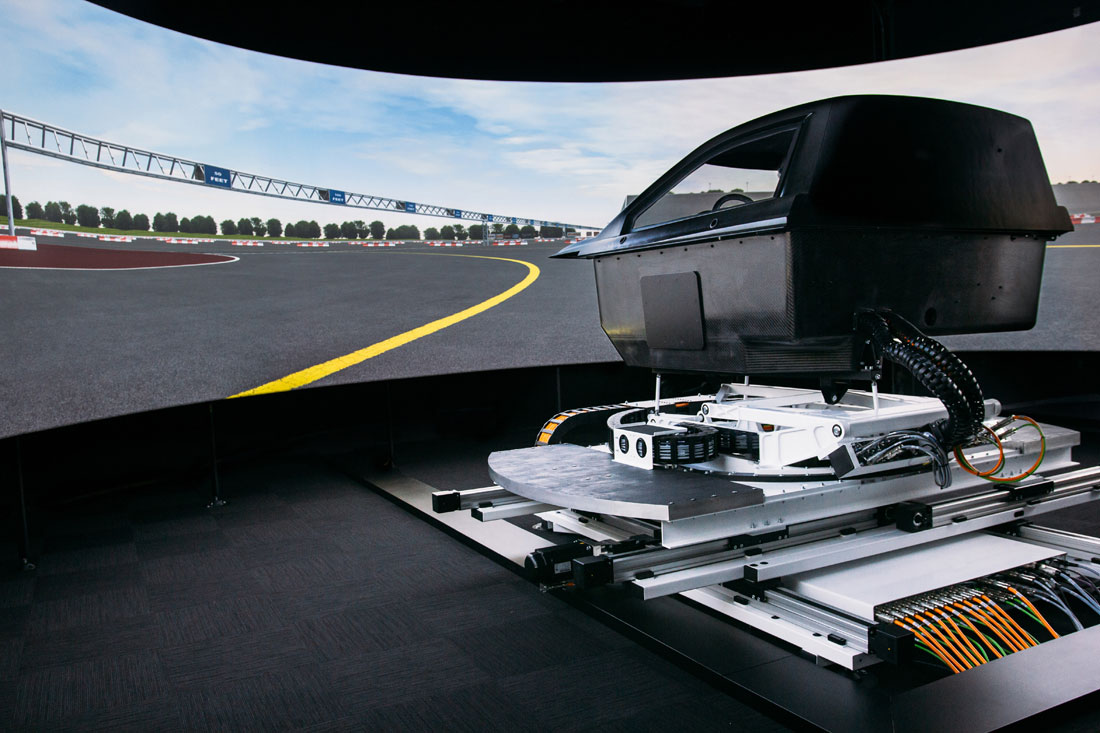
We’re going to comment and try to bring the reader closer by sharing our experience and how we lived the test of a DIY two-axis simulator with virtual reality headsets.
We’ll also attempt to address some doubts in the questions and answers to draw clear conclusions, keeping in mind that there are several factors to consider to achieve good immersion with this type of motion system.
QUESTIONS
1-Do you think the current market is ready in the short term for these systems, which are still relatively unknown to the general public?
“Although it’s too early to make an accurate assessment of how these systems will evolve, from my point of view, there won’t be a significant change in how they are presented or marketed, at least in the short to medium term.
It’s a fact that motion systems still carry an aura of exclusivity today, and while more and more simracers are interested and want to learn about them, in many cases, they require extra time and money that not everyone is willing to invest in their simulators.”
2-If they were to gain a good market share, who do you think they would be aimed at—end users or large companies offering such services?
“I think that, since it’s not a ‘toy’ for simulation, it would be aimed at end users with intermediate to advanced computer skills, and of course, at specialized companies offering rentals for events or their own facilities.
It’s worth noting that while these systems (if purchased pre-assembled) come configured for plug-and-play, they often require software/hardware adjustments, profile changes, etc., so I don’t see them being suitable for just any user.
It’s a significant addition to our simulator, not just economically speaking, but in terms of performance, so if someone isn’t going to take this ‘hobby’ seriously, I don’t think it’ll be worth it for them.
Lastly, it’s clear that flex-type systems (seat-based) would be more geared toward end users since they’re much more affordable than platform systems.”
3-Everything suggests that VR is here to stay, bringing a host of new possibilities. Could the unstoppable advancement of virtual reality have played a key role in reviving motion systems?
“For me, virtual reality is the starting gun to further promote motion systems even more. Before the arrival of these VR headsets, we relied on screens or projectors, and that made the experience of driving with such a system not entirely ‘immersive.’ Why? Quite simply, when driving in a moving cockpit and having the surrounding objects (the floor and walls of the room, furniture, people nearby, etc.) remain static, our brain didn’t fully dive into the experience, even making us want to stop sooner. It’s very strange to have a cockpit platform move with you while everything around it stays completely still—it feels more like a fairground ride than anything else.
That doesn’t happen with virtual reality anymore because you’re literally inside the virtual car, seeing a life-sized track without distractions. This way, any movement provided by these systems helps our brain understand it better and delivers a much higher-quality experience. This is also essential for our ‘vestibular system,’ which manages balance and spatial control, as the combination of virtual reality and motion is crucial to avoid disrupting it and thus prevent dizziness in more sensitive people.
That said, we need to be very careful with software configuration, as ‘exaggerated and abrupt motion’ can be counterproductive when using VR headsets.
The ideal is smooth motion with limited range—just enough for the harness to tighten against our torso when braking or loosen slightly when accelerating.”
4-What’s your preferred motion system in general terms?
“Personally, I lean toward 2- and 3-axis electric systems because I think they’re more than sufficient to add to our cockpit and feel the sensations a vehicle can transmit in an acceptable way.
As for the type of motion system, I prefer flex-type ones because I believe they offer the best quality-price ratio, plus they provide good sensations when paired with virtual reality glasses.
Despite what I’ve said, I think everything can be improved, and I’m currently testing other configurations that combine elements of platform systems.”
5-How did your passion for these types of systems begin?
“I still remember years ago how I started imagining an immersive system that could recreate the sensations a car transmits in my own room.
I began by experimenting, projecting a racing game onto a curved fabric panel, and even adapted parts of a car dashboard to my desk. But it was when the Formula 1 fever hit Spain that I started imagining a system capable of moving my static seat with all the elements I’d been adding.
After some time, and after reading a lot and learning about electronics and toy servo control, I ventured into building my first small prototype, controlled by an Arduino board and the X-Sim software.”
6-Do you consider it essential to end up adding motion to our simulator, or is it more of a complementary feature reserved for the most demanding users?
“It depends on many factors. First, priorities—there are other simulator components that are more necessary at the beginning. Second, price—not everyone can afford this financial outlay. And finally, the needs of each ‘simracer,’ because not everyone seeks the same sensations in a driving simulator. There are gamer simracers who prefer driving with the basics, even without immersion. On the other hand, there are simracers who are real or former drivers, and others who are simply amateur simracers, seeking the greatest immersion and realism possible in a cockpit, making motion very important for them.
I believe virtual reality will further encourage these motion systems, especially now that there are affordable ways to acquire them.”
